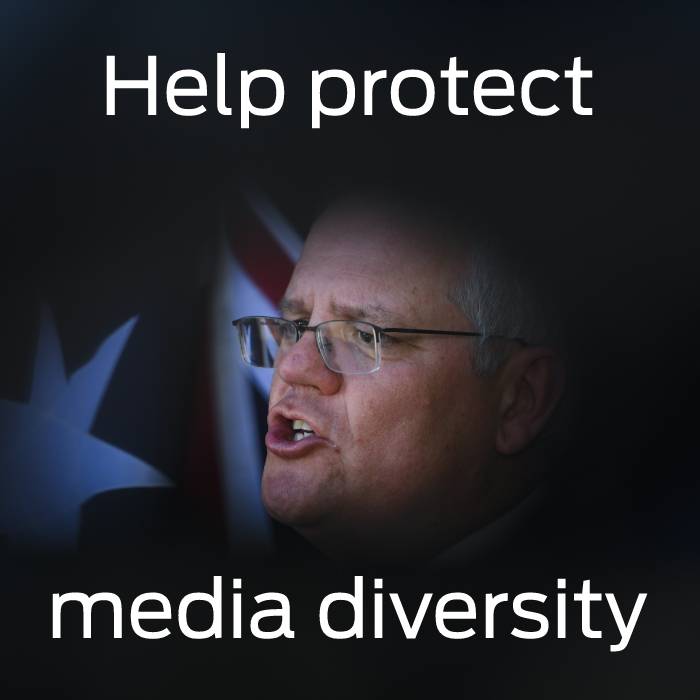Brighter Prospects Ahead
BEIJING, Nov. 10, 2023 /PRNewswire/ — This is a report from China Report ASEAN:
On October 17 and 18, the Third Belt and Road Forum for International Cooperation (BRF III) convened in Beijing under the theme “High-Quality Belt and Road Cooperation: Together for Common Development and Prosperity.” Over 10,000 registered representatives from 151 countries and 41 international organizations attended. It was China’s most important diplomatic event so far this year and the most high-profile event to commemorate the 10th anniversary of the Belt and Road Initiative (BRI).
Over the last decade, the BRI has evolved from ideas into actions and from a vision into reality. It has emerged as a public good widely welcomed by the international community and the most inclusive platform for international cooperation.
The modernization China has been pursuing is not for China alone, but for all developing countries through joint efforts. Global modernization should be pursued to enhance peaceful development and mutually beneficial cooperation and bring prosperity to all.
Over the years, the Belt and Road cooperation network has expanded from the Eurasian continent to Africa and Latin America. More than 150 countries and over 30 international organizations have signed Belt and Road cooperation documents with China. Three editions of BRF have convened, more than 20 multilateral cooperation platforms have been established, and a great number of signature projects and “small yet smart” projects have been launched.
On October 10, the State Council Information Office released a white paper titled “The Belt and Road Initiative: A Key Pillar of the Global Community of Shared Future,” which systematically elaborates on the principles, concepts, goals, and practices of the BRI and showcases the fruitful results achieved by China and the partner countries over the last decade.
Over the last 10 years, the BRI has stayed committed to building a global network of connectivity featuring economic corridors, international transportation routes, and information highways as well as railways, roads, airports, ports, pipelines, and power grids. Covering land, ocean, sky, and cyberspace, this network has boosted the flow of goods, capital, technologies and human resources among countries involved. A connectivity framework consisting of six corridors, six routes, and multiple countries and ports is essentially in place. Several landmark projects such as the China-Laos Railway, the Jakarta-Bandung High-Speed Railway, and Piraeus Port have been completed, bringing new development opportunities to the world. China has conducted more than 3,000 cooperation projects with relevant countries and catalyzed investment of nearly US$1 trillion.
The world is undergoing dramatic changes, with increasing downward pressure on the economy and numerous challenges hindering global development. The BRI has created a cooperation platform for common development and helped many developing countries accelerate modernization. Belt and Road cooperation was proposed by China, but its benefits and opportunities are for the world to share.
China is taking eight major steps to support high-quality Belt and Road cooperation: building a multidimensional Belt and Road connectivity network; supporting an open world economy; carrying out practical cooperation; promoting green development; advancing scientific and technological innovation; supporting people-to-people exchanges; promoting integrity-based Belt and Road cooperation; and strengthening institutional building for international Belt and Road cooperation. These steps have been highly significant for advancing Belt and Road cooperation and global development at the next stage.
Infrastructure is a prerequisite for development, said UN Secretary-General Antonio Guterres at the opening ceremony of the forum. And yet, billions in the developing world still lack access to basic systems. Contributions from the BRI can help transform infrastructure emergencies into opportunities, supercharge implementation of the sustainable development goals, and deliver hope and progress to billions of people. This is the significance of the initiative and the forum, he asserted.
In his speech, Russian President Vladimir Putin called the BRI a truly important and global idea that eyes the future and seeks to foster a fairer multipolar world and system of relations. Like most other countries, Russia and China have been making similar efforts seeking beneficial cooperation towards universal, sustainable and lasting economic progress and social welfare based on respect for the diversity of civilization and the right of every state to its own development model. “I’m confident that the BRI will help us find collective and truly effective solutions to really important regional and international issues,” said Putin.
Indonesian President Joko Widodo noted in his speech that it was his second visit to China in only three months. He expressed hope that the BRI boost for infrastructure development would continue in the spirit of equality and mutual benefit. He said that the Jakarta-Bandung High-Speed Railway, a landmark project of Belt and Road cooperation between Indonesia and China, had officially begun operation. He expressed appreciation for the positive contributions to developing countries made by the initiative. He called for collective efforts to make the initiative stronger and more impactful and looked for greater synergy between the BRI and Indonesia’s development plans to construct a new capital and drive energy transition. At the end of his speech, Widodo quoted a Chinese idiom, yugong yishan, which tells a well-known fable from Chinese mythology about the virtues of perseverance and willpower. “Let us work hard together to advance economic development and realize prosperity for our people,” said Widodo.
In his speech, Kazakh President Kassym-Jomart Tokayev said that the BRI has been widely recognized as a global public good and a grand platform for international cooperation. It has helped countries navigate the turbulent international landscape to meet global challenges. “Following the fundamental interests of the people of Kazakhstan and China, the spirit of friendship and eternal strategic partnership, our country is firmly committed to further promoting the high goals of the Belt and Road Initiative,” said Tokayev.
Argentine President Alberto Fernandez said that against the backdrop of the continuous consolidation of multilateralism, the BRI has become a promising international initiative for global cooperation. It is a mechanism that enhances relations among countries. It does not compete with existing regional mechanisms, but promotes synergy by bringing out the strengths of participating countries.
Ethiopian Prime Minister Abiy Ahmed called the BRI a major international cooperation initiative based on the principle of sustainable and dignified development. The initiative’s principle of connectivity has promoted trade between African countries as well as trade between Africa and China, contributing greatly to the overall economic development of the African continent.
Previously, China hosted the first and second BRF in 2017 and 2019. Participating countries reached consensus on many issues, which has promoted synergy among strategies and plans and accelerated implementation of relevant projects.
After the opening ceremony, three high-level forums were held on the topics of connectivity, green Silk Road, and the digital economy, respectively. Six thematic forums convened, focused on trade connectivity, people-to-people bonds, think tank exchange, a clean Silk Road, subnational cooperation, and maritime cooperation. The BRF CEO Conference was held on the eve of the forum.
At the high-level forum on connectivity, participants agreed that enhanced connectivity is conducive to better integration of global supply chains, industrial chains, and value chains. They supported efforts to further boost connectivity, build high-quality, sustainable, and resilient infrastructure, enhance cooperation in areas such as transportation, energy, resources and irrigation, steadily increase institutional connectivity in infrastructure, and build an open world economy.
The high-level forum on the digital economy exhibited some typical cooperation cases on digital infrastructure, digital medical care, digital trade, smart travel, and digital cultural tourism. Participants called for expedited efforts to foster an open, fair, and non-discriminatory environment for digital development and build a Digital Silk Road featuring joint contributions and shared digital resources, a vibrant digital economy, well-targeted and efficient digital governance, better digital security, and mutually beneficial digital cooperation.
At the high-level forum on green development, participants highlighted the need to address the challenges of global climate change together. All countries should pursue development while promoting common growth for all to prosper together. Belt and Road partner countries should strengthen cooperation in biodiversity conservation and pollution control, the circular economy, green infrastructure, green transportation, prevention and control of desertification and sandstorms, and other areas while promoting synergy between the Green Silk Road and the UN 2030 Agenda for Sustainable Development to empower green development.
At the thematic forums, the participants shared desires to fully advance practical cooperation, boost trade and investment liberalization and facilitation, improve the business environment, support the development of the blue economy, build a clean Silk Road, deepen subnational exchanges, and carry out a variety of cultural, educational, sci-tech, tourism, health, and sports activities.
During the forum, a total of 458 outcomes were achieved, far more than the number of the second BRF, including important cooperation initiatives and institutional arrangements such as the Beijing Initiative for Deepening Cooperation on Connectivity, the Beijing Initiative for Belt and Road Green Development, the Beijing Initiative on the Belt and Road International Digital Economy Cooperation, the Green Investment and Finance Partnership, and the High-Level Principles on Belt and Road Integrity Building as well as specific targets such as providing 100,000 training opportunities for partner countries by 2030 and increasing the number of joint laboratories built with partner countries to 100. Commercial agreements worth US$97.2 billion were concluded at the CEO Conference to help generate jobs and growth in relevant countries. The forum also decided to establish a BRF secretariat to facilitate institution-building and project implementation.
The success of the BRF III again evidenced that China has followed the right direction in advancing Belt and Road cooperation, that BRI partners have shown firm commitment to participation, and that high-quality Belt and Road cooperation enjoys bright prospects. Belt and Road cooperation will provide a steady driving force for world economic growth and global common development.
![]() View original content:https://www.prnewswire.com/apac/news-releases/third-belt-and-road-forum-for-international-cooperation-seeks-to-promote-high-quality-cooperation-among-countries-along-the-route-301985462.html
View original content:https://www.prnewswire.com/apac/news-releases/third-belt-and-road-forum-for-international-cooperation-seeks-to-promote-high-quality-cooperation-among-countries-along-the-route-301985462.html
SOURCE China Report ASEAN


















